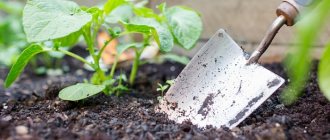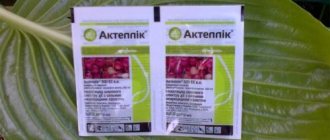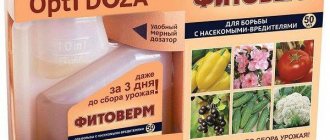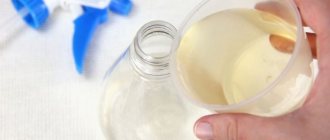Houseplants, like garden or garden plants, are subject to attacks by pests. This is very dangerous for them. Parasites suck out plant juices, damage the root system, which leads to the death of the flower. The problem is not always immediately noticeable. Therefore, it is worth carrying out regular inspections of your greenery so that at the first sign of infestation you can begin the fight against worms. Let's figure out how to do this correctly.
How to remove earthworms from a flower pot
–Categories
- COOKING (2046)
- blanks (525)
- desserts (198)
- snacks (169)
- meat (152)
- Korean dishes (116)
- fish (109)
- cheese (101)
- jam (91)
- bread (68)
- salads (52)
- Pizza (43)
- microwave (40)
- HOME STYLE (28)
- Bread maker (26)
- sandwiches (20)
- dishes in pots (18)
- air fryer (16)
- carving (15)
- steamer (13)
- drinks (10)
- decoration of dishes (5)
- Multicooker (3)
- homemade drinks (2)
- rolls (1)
- Beauty and health (1481)
- prayers. conspiracies. (701)
- Health and medicine (529)
- CAKES (1387)
- PIES (346)
- baked goods (283)
- creams (196)
- CUPCAKES (90)
- Pie (80)
- rolls (71)
- no-bake cakes (56)
- Easter (55)
- Mastic (34)
- waffles (24)
- Let's learn how to decorate cakes! (18)
- icing (10)
- cake decoration (9)
- Dacha, vegetable garden. (500)
- Indoor floriculture (183)
- Tomatoes (31)
- Strawberries, wild strawberries (27)
- Pests, diseases (26)
- Cucumbers (25)
- Bow (16)
- Garlic (13)
- Carrots (13)
- Cabbage (9)
- Pepper (4)
- Beetroot (3)
- Potatoes (1)
- Radish (1)
- Country fakes (1)
- USEFUL (397)
- pictures (57)
- programs (52)
- Diary design (40)
- For children (28)
- hairstyles (28)
- new year (25)
- THANK YOU (23)
- SMILES (9)
- Congratulations (6)
- HANDCRAFTS (281)
- knitting (84)
- beads (69)
- Newspaper weaving (39)
- Fur (26)
- embroidery (5)
- MODULAR ORIGAMI (3)
- We sew ourselves (2)
- PRAYERS (200)
- MISCELLANEOUS (111)
- GARDEN (33)
- Shrubs, raspberries, currants. (28)
- PHOTOSHOP (31)
- frames for photoshop (8)
- Repair (29)
- Apartment design (11)
- Manicure (16)
- homemade cleaning products (14)
- Animals (13)
- For car enthusiasts (12)
- FENG SHUI (7)
- Horoscope (3)
-Music
–
–Search by diary
–Subscription by e-mail
-Statistics
Sunday, March 24, 2013 20:47 + in the quote book
How to remove earthworms from flower pots
A sure sign that there are a lot of earthworms (worms) in a pot with a houseplant are small black pellets on the surface of the ground. If the activity of earthworms in the soil is considered beneficial, then in indoor culture they are certainly harmful, since they greatly contribute to the alkalization of the soil.
To exterminate worms, there are the following methods:
1. Watering flowerpots with vinegar solution: 1 part of ordinary vinegar is diluted in 3-4 parts of water. Watering plants with this solution is done two or three times. Such watering does not harm the roots of plants.
2. Watering plants with a decoction of Dalmatian powder. For this purpose, take 2-3 teaspoons of Dalmatian powder (Persian) into 1/4 bucket of warm water, which is pre-boiled with boiling water. The broth for watering must have a temperature of at least 31-37.5 °C. Some time after watering, the worms crawl to the surface of the earth and even fall on the windows and floor. If you take a solution that is too strong, the worms do not come out and after a while they come to life in the ground.
3. Watering with a solution of potassium permanganate. The solution should not be very strong - its color should be darker than the color of weak tea. Although this solution burns the root lobes, it does not harm the plant.
4. Watering with quassin solution. Quassin, a concentrated decoction of the Quassin tree, is sold in pharmacies in metal ampoules. This ampoule dissolves in 10 buckets of water. source
There are currently no 100% chemical means of combating them. There is one way - increasing the acidity of the soil by mulching with peat and using fertilizers.
You can get rid of earthworms with citramon (dilute a citramon tablet in 1 liter of water and pour it) or with the drug “mashenka” (a product for fighting cockroaches), planing it on top of the soil and into a tray. and another way to “catch” worms is to put an apple on the ground (you can just use a core), let it lie for a day, and then pick up the apple and gather those who like to eat it... aspirin dosage: 1 t. per 1 l. water for one-time watering, and if you use constantly 1/4 t. per 1 liter. water.
One can argue for a long time about the benefits or harm of earthworms in pots of indoor flowers. Some amateur gardeners claim that they consume earthen organic matter and structure the soil, providing oxygen access to plant roots, and in general, what is useful in nature cannot harm indoor flowers. Others object that in cramped conditions of flowerpots, earthworms, on the contrary, only compact the soil and damage the root system of domestic flowers. In old books on floriculture, it is noted that the results of the vital activity of earthworms pollute the drain hole of the flower pot, as a result of stagnation of water, leading to rotting of the root system of the flower.
I am also inclined to believe that they can only be considered useful organisms in the garden and while fishing, and only house plants should live in flower pots. In addition, it is not always possible to accurately determine the type of worm; some of them are certainly not useful. While fresh soil is full of useful substances, they may be harmless, but over time they will begin to feed on root organic matter along with root hairs or can simply damage them mechanically. Or maybe the problem is purely psychological, it’s somehow uneasy to think that there is someone crawling there on the windowsill.
Few amateur gardeners breed worms on purpose. But they can independently come to us as part of ready-made soil mixtures. How to get rid of earthworms in indoor pots, without replanting flowers and replacing all the soil, which does not guarantee the appearance of new living creatures.
Tell me, if there are worms in indoor flowers or pots, is this good or bad?
clinical blonde
Over time, they will begin to eat the roots of your flowers. . Get rid of it. It is necessary not only to change the soil, but also to scald the pots to get rid of the larvae..
s-elena66
This is bad. Replant the flowers.
Alexander Pushkin
If it’s rainy, it’s not dangerous, but if it’s roundworms, pinworms, tapeworms, it’s a big deal!!!
Personal Account Removed
Fine
Puppeteer
Earthworm Earthworm (Lumbricidae)
Length from 2-3 cm with thickness approx. 1 mm to 50 cm with a thickness of 1.5-2 cm. Approx. 300 species, widely distributed; most numerous in forest and forest-steppe zones. They live in the soil, are nocturnal, and crawl to the surface during the day after heavy rains. Soil formers. 11 species are protected. Earthworms (the family of oligochaetes) are usually considered beneficial organisms, but in a small pot of houseplants they can be harmful.
Harmful effects Normally, they feed on plant debris, but in a pot, when there is a shortage of fresh organic matter, they easily switch to living plant roots and underground shoots and rhizomes. Earthworms spoil the soil in flower pots with their liquid sticky secretions, clog the drainage, causing the soil in the pot to turn sour. If there are earthworms in the earthen coma, characteristic lumps of earth appear on the surface, thrown out by them from their passages. If there are earthworms in a pot, the plant becomes lethargic and stunted in growth.
Control methods Soil from the street can contain not only adult individuals, but also eggs. Therefore, it is better to sterilize garden or forest soil in one way or another before use. If plants are taken outside in the summer, place the pots only on pallets and so high that earthworms cannot climb into them. At the same time, worms rarely appear and successfully reproduce in pots with indoor plants due to the peculiarities of preparing soil mixtures and the watering regime. But if they have already appeared in the pot, you need to immerse the pot with the plant in warm water for half an hour - the worms will either crawl to the surface, where they can be easily collected, or drown. It is also quite easy to collect large worms when replanting. You can water the soil in the pot well with a pink solution of potassium permanganate.
Natalya Kalantyr
They gave you a very good answer, I didn’t have time. Indeed, all flowers must be replanted, be sure to wash them with a solution of potassium permanganate. Otherwise they will devour all the roots and the flowers will die. Good luck!
tonyte
bad, change the soil, it’s better to buy it in a store, there definitely won’t be any larvae there.
Lena
don't change anything. just scrape the Mashenka chalk above the ground in the pot, it is designed to fight flies and ants. tested by my own experience, all creatures disappear.
Nifri
if it’s rain, then it’s good, thanks to them the roots breathe, but if there’s maggots or something else, replant...
Im@go
This is bad! And if you have lice in your head, will you also be here to find out whether this is good or not?
Natalia
Earthworms in flower pots are good! They process the soil and fertilize it; some people specially plant them in flowers if it is not possible to replant and you want to renew the soil!
love it
earthworms in a pot are a disaster - this year I experienced the hard way of their eviction, and I always buy land - I don’t save, one of the packages was with... (under the ellipses read the bad words) arrowroot almost disappeared, until I realized that now there is only one small leaf sitting, and in order to remove them I had to completely wash off the soil from the roots, all other methods did not work, the Amazon lily had dying coencentric circles on the leaves, it was not possible to save my favorite rose, I suffered all summer and to this day I am not sure that I managed it everywhere , I soaked myrtle 4 times - it’s big and a complete replacement for the earth, it’s like death for him, and potassium permanganate makes him feel bad, show me that idiot the cat puts them in there on purpose
Galina
And I put an earthworm in each pot. The flowers and I are happy, the worms, I don’t know, but they’re alive.
Irina Kirilova
It’s bad for flowers, but I don’t know for you.
Lyudmila Otradnaya
Any worms (even earthworms) are very dangerous for indoor plants: the plant slows down its growth and then dies. It is urgent to change the soil, wash the roots with running water and a weak solution of potassium permanganate. Before planting, roast the pot in the oven and cool.
How to get rid of earthworms overnight.
This method is inspired by nature. We have all repeatedly observed how, after rain, many worms crawl to the surface. That's why they were called rain ones. Let's simulate the situation at home. To get rid of earthworms, it is often enough to place the flower pot in a container of water for one night. One necessary condition: the pot with soil must be immersed in water to the top. You can choose a bucket or basin as a container. By morning, due to lack of oxygen, all the worms will crawl to the surface. All that remains is to wash them off or remove them in another way.
For prevention, after changing the soil, I recommend carrying out a water procedure once every two months, immersing the flower for 1-1.5 hours in water heated to 60˚ Celsius. Hot water will also help get rid of soil nematodes and enchytrea (small whitish soil worms). Therefore, it is necessary to periodically add hot water.
I would like to draw your attention to the fact that it is not worth extending the time of such a procedure to guarantee it. The flower already received an excess amount of moisture. Therefore, in order to prevent the root system from rotting, you should refrain from watering for some time.
Another popular way to get rid of earthworms.
Place the pot with the indoor flower in a larger container. Dissolve 1 teaspoon of dry mustard in 1 liter of warm water. Thoroughly stir and water the pot with the patient, trying to evenly distribute the watering over the entire surface of the soil so that the moisture is absorbed evenly throughout the entire volume. The worms themselves will begin to leave the ground.
Symptoms of earthworms.
Earthworms often crawl to the surface
If there are worms in flower pots, what should you do????
Tane4ka
To start the fields with a solution of potassium permanganate, medium strength. If it doesn’t help, replant it in new soil. Just rinse the roots thoroughly in a solution of potassium permanganate
Alexander Klimov
don’t do anything, they loosen the soil for plants, it’s useful
Dmitry Levin
Now you can always have fishing bait on hand. So it's not that bad!
Svetlana
Urgently poison, buy the poison in a specialized store, replant the flowers! Good luck!!!!
Bunny
We need to get rid of them. I know this method: put a flower pot in a container of hot water. After some time, the worms will crawl to the surface on their own. Although I haven’t tried it myself, I haven’t encountered such a problem.
Sega
if the earthworms are earthworms, you can’t do anything, it will only be good for the plants... I can’t imagine any other worms in the ground.
Natasha Chepak
depends on what. if the worms are pests, you need to replant them and buy fertilizer.
Svetlana ***
This is good! worms loosen the soil naturally, and also secrete enzymes, which are a kind of fertilizer. So, let your worms live!
Loner
Replant immediately. Rinse the roots. a very weak solution of potassium permanganate. Add activated carbon.
✿Elena m✿
This is very bad, they will multiply and begin to gnaw the roots of the plants. Get rid of it immediately. You can put the pot in hot water, up to +50 degrees, they will come out to the surface of the mud, or you need to water them a couple of times with actelik or actara.
Tatjana
nothing will help the plant needs to be thrown away
Olga Markova
feed them
Irina Kirilova
There is no need to throw anything away. I had these little worms in my violets. At first, when I was loosening, I thought it was roots, but they began to move. So long, white, thin. Buy Aktara, dilute it with water and water it. After just one watering, they all disappeared at once.
HOW TO REMOVE EARTHWORMS FROM FLOWER POTS.
There are the following methods to exterminate worms. 1) By-
Filling flowerpots with vinegar solution: 1 teaspoon of ordinary vinegar, diluted in 3-4 teaspoons of water. Watering plants with this solution is done two or three times. Such watering does not harm the roots of plants. 2) Watering plants with a decoction of Dalmatian powder. For this purpose, take 2-3 teaspoons of Dalmatian (Persian) powder into 1/4 bucket of warm water, which is pre-boiled with boiling water. The broth for watering should have a temperature of at least 31-37.5 ° C. Some time after watering, the worms crawl to the surface of the earth and even fall on the windows and floor. If you take a solution that is too strong, the worms do not come out and after a while they come to life in the ground. 3) Watering with a solution of potassium permanganate (kaliwn hypennanganicum). The solution should not be very strong—its color should be darker than the color of weak tea. Although this solution burns the root lobes, it does not harm the plant. 4) Watering with quassin solution. Quassin, a concentrated decoction of the Quassin tree, is sold in pharmacies in metal ampoules. This ampoule dissolves in 10 buckets of water.
thrips control agent This refers to Trips haemorrhoidalis Bouche, which extremely depletes the foliage and, in general, the tender young parts of the plant. Some varieties of azaleas are especially susceptible to thrips, and an excellent way to combat this parasite has been to immerse the entire above-ground part of the plant in very cold water, and keep the plant in the water for several minutes, repeating a similar operation several times. The immersion itself is done as follows: the surface of the earth in the pot is tied with something so that when the plant is tipped over the earth does not crumble, after which the crown is carefully immersed in water, and in order not to hold the plant in your hands, the edges of the pot are strengthened on two slats placed across the tub of water . We consider it useful to add that Bogdanov’s tobacco extract in a wide variety of consistencies was also tested to combat thrips, and it turned out that this remedy is not only useless, but also often has a detrimental effect on the plant, burning the leaves and buds, which then fall off. They used Bogdanov's extract against the cabbage butterfly caterpillar (spraying the cabbage), but the results were insignificant, so they had to resort to picking off the worms, spraying with a solution of wormwood and sprinkling with ash, and with these means they managed to free the cabbage from its worst enemy.
| 12 Zak. 390 |
remedy against shield thai. To combat shield aphids, a solution of sabur (aloe) is recommended as a well-tested remedy. The solution is prepared in hot water, and 100 g of sabur is taken per bottle of water. The solution prepared in this way is carefully smeared with a brush on the petioles, trunk, leaves, and in general all parts that were attacked by the insect. The same solution, but only half diluted with water, turns out to be an excellent remedy for other insects that attack indoor plants. The usual method of use is washing.
treatment of diseased plants. to lovers of floriculture that the plants they grow, due to careless watering, get sick and then very often die. This happens due to the formation of various acids harmful to roots in the soil. They usually try to save their plants by replanting them in fresh soil, which in most cases is successful, especially if a significant layer of shards is placed at the bottom of the pot and care is taken to ensure that the drainage hole does not become clogged. But the essence;
There is a simpler remedy that is just as effective and effective;
rather to the goal: this is watering the plants with hot water (from 56.db | 62.5°C). Watering should be done repeatedly and so abundantly that water flows onto the saucer each time. | This not only frees the earth from acid, the roots come to life, but also kills all worms and insect larvae. Repeated experiments on specimens of Ficux elastica and other indoor plants have proven the feasibility of this watering. When the top layer of soil in the pot has dried out somewhat, it is carefully loosened and, if the soil has settled very much, fresh soil is added. Most often, alkalization of the soil is a consequence of excessive dampness maintained in it, the use of non-porous pots, lack of bottom drainage (water flow), as well as planting plants with small roots in large pots, and is observed mainly in lands with an excessive amount of leafy and especially manure humus. In alkaline soil, the roots “cannot function properly, they turn black and begin to rot, which is immediately reflected in the above-ground parts of the plants: young leaves grow pale, and old ones begin to turn yellow, then turn black from the edges. When alkalization of the soil is noticed in time, then it is enough to just destroy it, but if the plant sits in a pot that is too large or its roots have begun to rot, then by eliminating the alkalization
you should, without paying attention to the time of year, transplant the plant into a smaller pot, removing the previously rotten root parts. During growth or shortly before its onset, when heating the roots cannot harm the plant, the destruction of alkalization is easily achieved by washing the soil with water at 50-56 ° C, but not higher. For this purpose, placing the pot with the plant on a stand above the basin, continuously water the soil with warm water until the water flowing through the drain hole at the bottom of the pot, first light, then brown, becomes colorless again, after which, allowing it to cool , put the pot with the plant in place. If, as in the above-mentioned case, in addition to washing the soil, it is necessary to replant the plant itself, then this is done only after the coma has sufficiently dried out. Alkalinization, when it is weak and detected during the plant's dormant period, can sometimes be eliminated by loosening the surface of the soil, cleaning the pot from dirt and mold, placing it on linings and keeping the plant without waterlogging. If the alkalization is significant, then in addition to taking the indicated measures, the plant should be watered with a weak solution of nitric acid: one tablespoon per bucket of water. Nitric acid can be replaced with potassium permanganate salt. In this latter case, the said salt is dissolved in water in such an amount that the water turns a deep red color, and a lump of earth is poured over it until the water flowing out of the pot takes on a pink color. Let us note here, by the way, that a solution of potassium permanganate salt drives earthworms out of the ground.
Transverse profiles of embankments and coastal strips: In urban areas, bank protection is designed taking into account technical and economic requirements, but special importance is given to aesthetic ones.
Single-post wooden support and methods for strengthening corner supports: Overhead line supports are structures designed to support wires at the required height above the ground and water.
How to remove earthworms from a flower pot
–Categories
- COOKING (2046)
- blanks (525)
- desserts (198)
- snacks (169)
- meat (152)
- Korean dishes (116)
- fish (109)
- cheese (101)
- jam (91)
- bread (68)
- salads (52)
- Pizza (43)
- microwave (40)
- HOME STYLE (28)
- Bread maker (26)
- sandwiches (20)
- dishes in pots (18)
- air fryer (16)
- carving (15)
- steamer (13)
- drinks (10)
- decoration of dishes (5)
- Multicooker (3)
- homemade drinks (2)
- rolls (1)
- Beauty and health (1481)
- prayers. conspiracies. (701)
- Health and medicine (529)
- CAKES (1387)
- PIES (346)
- baked goods (283)
- creams (196)
- CUPCAKES (90)
- Pie (80)
- rolls (71)
- no-bake cakes (56)
- Easter (55)
- Mastic (34)
- waffles (24)
- Let's learn how to decorate cakes! (18)
- icing (10)
- cake decoration (9)
- Dacha, vegetable garden. (500)
- Indoor floriculture (183)
- Tomatoes (31)
- Strawberries, wild strawberries (27)
- Pests, diseases (26)
- Cucumbers (25)
- Bow (16)
- Garlic (13)
- Carrots (13)
- Cabbage (9)
- Pepper (4)
- Beetroot (3)
- Potatoes (1)
- Radish (1)
- Country fakes (1)
- USEFUL (397)
- pictures (57)
- programs (52)
- Diary design (40)
- For children (28)
- hairstyles (28)
- new year (25)
- THANK YOU (23)
- SMILES (9)
- Congratulations (6)
- HANDCRAFTS (281)
- knitting (84)
- beads (69)
- Newspaper weaving (39)
- Fur (26)
- embroidery (5)
- MODULAR ORIGAMI (3)
- We sew ourselves (2)
- PRAYERS (200)
- MISCELLANEOUS (111)
- GARDEN (33)
- Shrubs, raspberries, currants. (28)
- PHOTOSHOP (31)
- frames for photoshop (8)
- Repair (29)
- Apartment design (11)
- Manicure (16)
- homemade cleaning products (14)
- Animals (13)
- For car enthusiasts (12)
- FENG SHUI (7)
- Horoscope (3)
-Music
–
–Search by diary
–Subscription by e-mail
-Statistics
Sunday, March 24, 2013 20:47 + to quote book
How to remove earthworms from flower pots
A sure sign that there are a lot of earthworms (worms) in a pot with a houseplant are small black pellets on the surface of the ground. If the activity of earthworms in the soil is considered beneficial, then in indoor culture they are certainly harmful, since they greatly contribute to the alkalization of the soil.
To exterminate worms, there are the following methods:
1. Watering flowerpots with vinegar solution: 1 part of ordinary vinegar is diluted in 3-4 parts of water. Watering plants with this solution is done two or three times. Such watering does not harm the roots of plants.
2. Watering plants with a decoction of Dalmatian powder. For this purpose, take 2-3 teaspoons of Dalmatian powder (Persian) into 1/4 bucket of warm water, which is pre-boiled with boiling water. The broth for watering must have a temperature of at least 31-37.5 °C. Some time after watering, the worms crawl to the surface of the earth and even fall on the windows and floor. If you take a solution that is too strong, the worms do not come out and after a while they come to life in the ground.
3. Watering with a solution of potassium permanganate. The solution should not be very strong - its color should be darker than the color of weak tea. Although this solution burns the root lobes, it does not harm the plant.
4. Watering with quassin solution. Quassin, a concentrated decoction of the Quassin tree, is sold in pharmacies in metal ampoules. This ampoule dissolves in 10 buckets of water. source
There are currently no 100% chemical means of combating them. There is one way - increasing the acidity of the soil by mulching with peat and using fertilizers.
You can get rid of earthworms with citramon (dilute a citramon tablet in 1 liter of water and pour it) or with the drug “mashenka” (a product for fighting cockroaches), planing it on top of the soil and into a tray. and another way to “catch” worms is to put an apple on the ground (you can just use a core), let it lie for a day, and then pick up the apple and gather those who like to eat it... aspirin dosage: 1 t. per 1 l. water for one-time watering, and if you use constantly 1/4 t. per 1 liter. water.
One can argue for a long time about the benefits or harm of earthworms in pots of indoor flowers. Some amateur gardeners claim that they consume earthen organic matter and structure the soil, providing oxygen access to plant roots, and in general, what is useful in nature cannot harm indoor flowers. Others object that in cramped conditions of flowerpots, earthworms, on the contrary, only compact the soil and damage the root system of domestic flowers. In old books on floriculture, it is noted that the results of the vital activity of earthworms pollute the drain hole of the flower pot, as a result of stagnation of water, leading to rotting of the root system of the flower.
I am also inclined to believe that they can only be considered useful organisms in the garden and while fishing, and only house plants should live in flower pots. In addition, it is not always possible to accurately determine the type of worm; some of them are certainly not useful. While fresh soil is full of useful substances, they may be harmless, but over time they will begin to feed on root organic matter along with root hairs or can simply damage them mechanically. Or maybe the problem is purely psychological, it’s somehow uneasy to think that there is someone crawling there on the windowsill.
Few amateur gardeners breed worms on purpose. But they can independently come to us as part of ready-made soil mixtures. How to get rid of earthworms in indoor pots, without replanting flowers and replacing all the soil, which does not guarantee the appearance of new living creatures.
There are earthworms in the pots of indoor flowers, what should I do? Is this harmful or good for the flowers?
Klava Ivanova
an earthworm in a flower pot is a disaster, this year I received this gift with purchased soil - in the bulbous ones I first discovered that strange spots appeared on the leaves, they curl up at the bottom and chew and chew..., I had to replant them a second time, but not all the plants you can completely clear the old soil without loss... in some varietal fuchsias I discovered it too late and even the cuttings could not be rooted; a solution of manganese and immersion in water up to my ears also does not always work.... I sympathize - take action, I advise you to start rooting delicate plants again = while there is somewhere to take cuttings from
stasya
what passions you tell! the soil was visible from the garden... from the dacha... buy ordinary soil for indoor flowers and replant!
Ildar Iskandarov
Healthy
miha1968
useful, loosens the soil
Yuri Vasilievich.
very helpful
Andrey Neizvestny
They won’t grow on their own, apparently they were in the ground. There is nothing terrible, throw away the dead ones (or fry them). Flowers will only say thank you.
Vasilich
Just say so: my little man is a famous fisherman...
Anastasia K********
I would like to know if you have meter-long flower pots or if you have children who make fun of you????
Natalia Sidorova
My earthworms ended up chewing off the roots of the bulbous flowers and they all died, so it’s best to change the soil. Worms are good in the garden, they loosen the soil there, but at home they are parasites!
Anastasia Mazanko
Worms do not appear on their own in indoor pots; ask your husband if it was his doing.
Anna Vasyukova
My flowers died after the worms appeared; after all, they feed on the roots.
(=sm!Le=)
biting! get mirror carp. You will have phosphorus in almost unlimited quantities. Feed the worms with squeezed tea leaves. Forget about flowers - they don't bring happiness...
GIT+A
that’s the thing: if there are a lot of them, they are harmful!!! and they came from purchased soil, but this is not the only gift that can be bought along with the soil
Lyoshka the stove maker
Dilute potassium permanganate until pink and water the flowers. If once doesn't help, repeat. Only pink solution! Don't burn the roots.
maria_johansson
While there are few worms and the pot is large, they eat old leaves and roots, just like in nature. Once there are a lot of worms and a small pot, the worms eat everything they come across. I got into a lot of trouble last winter when flower pots from the garden were brought into the house, and in the garden worms entered the pots through a hole at the bottom and took root. This summer, I lined the bottom of the pots to keep out worms and ants with cloth or plastic mesh, then with stones to drain water, then with soil. There were no worms in such pots, and in 2 pots I did not close the loophole and now I had to urgently save 2 flowers (calla lilies), the roots were all eaten by worms. Of course, in the garden they have a lot of food and they don’t attack my plants that much, but at home in flower pots they are big pests.
Andrey Zhurba
They feed on dead roots!! ! Perhaps you are shifting Your blame onto the worms? “Worms excellently prepare the soil for plant growth... They sift the soil so much that no dense mineral particles remain in it... They thoroughly mix all the soil, like a gardener preparing crushed soil for his most exquisite plants” (C. Darwin). While soil microorganisms and plants fix soil chemical elements in their cells, earthworms and other soil invertebrates help remove these elements from plant organic matter and microbial biomass, thus providing food for new plants. In this cycle of substances, earthworms, these little tireless workers, act as regulators of the activity of microorganisms, enriching the soil with natural nitrogen, phosphorus and potassium, balanced among themselves. Also especially valuable is the fact that worms absorb and digest not only humus, but also bacteria, algae, fungi with their spores, protozoa of the animal world (including nematodes!) - these are real deodorizers and orderlies, soil improvers, disinfecting pathogenic soil microflora.
Earthworms pass a large mass of dead plant matter through their intestines, in which the plant tissues are finally destroyed, digested and then mixed with the soil. Thanks to the activity of earthworms, the compost “matures” faster, turning after their processing into a loose, loose, consisting almost exclusively of granular excrement of worms, an environmentally friendly and extremely useful fertilizer (vermicompost), which is easily absorbed by plants. It is also especially important that plant residues processed by earthworms acquire unique and valuable properties for the soil, since they are transformed into water-resistant, water-intensive, fertile structures.
ALEX
I also asked this question, look at my answers; This is how my cheflera died; I wasted away for no reason, no matter what I did; then I noticed that the earth was being sifted into the pan, I dug up a flower - there were so many worms that they were literally swarming; didn’t save the flower; I think they got started with the purchased soil
Lelya
I had them too. Nasty!! ! I felt so disgusted that I threw it away along with the flower. And I washed the pot with “Whiteness” soap.
How to get rid of earthworms overnight.
This method is inspired by nature. We have all repeatedly observed how, after rain, many worms crawl to the surface. That's why they were called rain ones. Let's simulate the situation at home. To get rid of earthworms, it is often enough to place the flower pot in a container of water for one night. One necessary condition: the pot with soil must be immersed in water to the top. You can choose a bucket or basin as a container. By morning, due to lack of oxygen, all the worms will crawl to the surface. All that remains is to wash them off or remove them in another way.
For prevention, after changing the soil, I recommend carrying out a water procedure once every two months, immersing the flower for 1-1.5 hours in water heated to 60˚ Celsius. Hot water will also help get rid of soil nematodes and enchytrea (small whitish soil worms). Therefore, it is necessary to periodically add hot water.
I would like to draw your attention to the fact that it is not worth extending the time of such a procedure to guarantee it. The flower already received an excess amount of moisture. Therefore, in order to prevent the root system from rotting, you should refrain from watering for some time.
Another popular way to get rid of earthworms.
Place the pot with the indoor flower in a larger container. Dissolve 1 teaspoon of dry mustard in 1 liter of warm water. Thoroughly stir and water the pot with the patient, trying to evenly distribute the watering over the entire surface of the soil so that the moisture is absorbed evenly throughout the entire volume. The worms themselves will begin to leave the ground.
Will one worm grow into two if it is cut in half?
Not all types of worms are capable of regenerating the head part. And earthworms can’t do that. If you cut a worm in half, the tail part will die, and the head part will eventually grow a new tail.
The structure of an earthworm.
You can determine where the head and tail parts of an earthworm are located simply by a small light thickening - a belt located closer to one of the ends of the worm. That part of the worm, divided by a belt, which is shorter and thicker is the head, and the long part is the tail.
It is even easier to understand the structure of a worm by its movement; in most cases, it crawls head first. He puts the vehicle in reverse gear to escape danger. For example, if you grab his head, which is sticking out of the ground, he will try to crawl back inside his move.
How to get rid of white worms in indoor flowers
Houseplants are no less susceptible to insect attacks than garden plants. Improper care of flowers contributes to the appearance of flying, jumping and crawling pests. Most of them are very dangerous for plants - they damage the root system, suck juice from leaves and stems, bite through buds, preventing flowers from blooming. A common occurrence is small white worms in the soil of indoor plants.
Types of insect pests similar to worms
White or transparent worms in indoor pots are a warning sign. Pests weaken the plant and slow down its growth. The flower stops producing buds, the leaves turn yellow and wither. These worms can be either adult insects or their larvae. Whatever they are, if timely measures are not taken, the plant may die.
Insect larvae
When we talk about larvae, we usually mean several genera of insects from the order Diptera.
Mushek
Springtails (springtails, springtails) are tiny arthropods no larger than 5 mm in size. They have a jumping fork in the lower part of their body, which allows them to move quickly. Some specimens are so small that they are difficult to see. Often, owners notice white worms in the tray, in the water remaining after watering. Insects live in the soil and feed on organic debris. If this nutrition is not enough for them, the roots of the flower and young shoots are destroyed. Waterlogged soil is a favorable habitat.
Fungus gnat
Representatives of the Sciarich family that indoor gardeners encounter:
- sciara midges;
- fungus gnats;
- genus Bradysia.
Only a specialist can find the differences between these insects, but the damage they cause and the methods of control are almost the same. The insect is a small mosquito. The length of the thin body is 3-4 mm, the head is round. It has only a front pair of transparent wings, and in place of the hind wings there are club-shaped halteres.
Insects fly well and reproduce quickly. A young mosquito has a light gray body, which turns black with age. Adults do not cause any particular harm to plants, but can carry various diseases and the larvae of other pests.
The main damage is caused by fungus gnat larvae - white, transparent worms 3-5 mm long with a black head.
Insects damage the root system of indoor flowers. The supply of nutrients and moisture to the plant is disrupted, and the flower may die. The larvae get in with the contaminated soil. The second way for adults to enter an apartment is from the street through open windows. Mosquitoes prefer waterlogged soil.
Nematodes
Nematodes (roundworms) are protostomes. Zoologists suggest the existence of about a million species on earth. They live in fresh and salt water bodies, in the soil.
Nematodes are tiny worms in indoor flowers that grow in moist soil and feed on living and dead plants.
Types of plant nematodes:
- Galls that settle on the roots, their secretions contribute to the formation of thickenings in which pests live and reproduce. When the eggs mature, the shell is destroyed and the larvae spread in the soil.
- Nematodes with free formation of cysts are attached to the root.
- Free nematodes do not have a permanent place of residence, crawling and damaging various plant organs.
Signs of nematode damage:
- the appearance of yellow and subsequently brown and black spots on the foliage;
- reduction in leaf size, their deformation;
- curvature of stems, drying of apical buds;
- the formation of thickenings and swellings on the root system.
Nematodes lay oval eggs, from which white, partially transparent larvae emerge.
Enhytrea
The appearance of enchytrea in house flowers is difficult to notice; they live on the roots of plants. If measures are not taken, the root system will be covered in worms. Signs of damage are stunted growth, yellowing of leaves. Enchitraea often appear in greenhouses; they love warmth and moisture. Pests look like small, mobile white worms with pointed ends. The body of the worm is translucent, through which the digestive organs are visible. These pests are good food for aquarium fish.
If there are earthworms in the soil of indoor flowers, they can be removed without replanting the flower.
Karpik
So that's it. DON'T LISTEN TO THE BULLSHIT. WE NEED TO BRING THEM OUT!! ! everything is connected with their nutrition, they not only loosen the soil, they feed on organic matter, when the rotting is over, they will start eating the flower...
Tatyana Yakimova
You can’t, you need to shake out all the soil.
Peganov Yuri™
There is no need to take them out - it’s even useful - they loosen the ground!!!
EARTHWORM :
The family of earthworms (Lumbricidae) consists of almost 170 species, and belong to the phylum Annelides. All earthworms are similar in their lifestyle. They live in damp places, swarming tunnels underground, and in cold and drought they go deep into the ground. After heavy rains, due to lack of air, earthworms are forced to rise to the surface. They feed on decaying plant debris and soil microorganisms.
The extremely positive role that earthworms (aka Lumbricus terrestris) have played (and continue to play) in the processes of creating fertile and living soil is widely known. We can talk about this endlessly, but this is a separate conversation. In a nutshell, an earthworm is a continuously operating mini-factory for the production of humus (soil organic matter).
Among some flower gardeners, there is a widespread belief about the harm that earthworms can cause. Which (allegedly) gnaw roots in pots, gnaw at young shoots, eat seedlings, sprouts, seeds, etc. To destroy worms, they come up with different methods, the most harmless of which is freezing the soil. And what’s most offensive is that they say (especially on the Internet) all sorts of unfounded nasty and stupid things about earthworms...
The peculiarities of digestion make earthworms detritivorous, i.e. They feed on detritus - decaying plant organic matter (in combination with soil particles) located on the surface of the soil or in their underground burrows, as well as in the soil itself. Therefore, the coprolites that the earthworm leaves behind are lumps of soil enriched with nitrogen, microelements, and having low acidity due to the alkaline environment of its intestines. Because of its slowness and thoughtfulness, the earthworm does not have time (and is even embarrassed by prying eyes) to eat detritus, and therefore drags it into storage deep into the soil, saturating it with organic matter and feeding its smaller brothers. In addition, thanks to the numerous passages and burrows of earthworms, the air supply to the soil and all its inhabitants and plant roots is significantly increased.
What practical conclusions can be drawn from the above reasoning?
1. There is no need to be afraid of worms, expecting any harm from them. They cannot cause it because of the peculiarities of their diet (Nature acted very wisely...). Although they do have teeth! As for their life in pots (with indoor plants or seedlings), there is only one extreme case that it is advisable to avoid: when the volume of the pot is so small compared to the size of the worm that it turns it (the worm) into Ivan Matveich living in a crocodile... :-))
2. Knowing the digestive characteristics of a worm, you need to create appropriate conditions for it in the garden for life, rest and reproduction. And then all problems with the quality (structure, fertility, etc.) of the soil in the garden will be solved by themselves. More precisely, earthworms will do everything for you. I can say that in my garden, when I try to open the soil (in any randomly chosen place in the garden), I certainly find living and thriving worms, in a wonderful mood...
ADDITIONAL INFORMATION via the links below:
https://ru.wikipedia.org/wiki/Earthworms https://www.green-pik.ru/sections/40.html https://www.gardenia.ru/pages/4ervi_001.htm https://www .aquaria.com.ua/cherv.html https://www.sunnygarden.ru/pets/home_worms.html https://www.floralworld.ru/illnesses_wreckers/lumbricidae.html
Igor Platunov
Can. My fisherman husband will really like them.
Andrey Kurochkin
pour in a strong solution of potassium permanganate
Linda
Potassium permanganate, but not strong, otherwise the roots can be burned.
Ksyushka
They do not need to be removed; they loosen the soil and do not harm the flower.
SearchWave
In principle, there is no need to remove it, but if it gets irritated, place the flowerpot in a pot of water, the water should reach the edge of the flowerpot. Water will be absorbed through the bottom hole and fill the container, the worms, ticking from the water, will crawl out. Then remove the pot from the pan, the water will flow out. Potassium permanganate and other strong chemicals will damage the roots.
P/S. I agree with “Peganov Yuri”
[email protected]
They are loosening the earth... But a pot of indoor flowers is a small container, and over time the soil in it will become unusable from these worms. They will pass it all through themselves several times, taking nutrients and turning it into small crumbs. I had this story.
Marishk@
Why breed them? We specially plant them in flowers, but in this case, don’t forget to sometimes water the flowers with tea leaves, which is good for the flowers and good for the worms too.
ALEX
I don’t know, but because of them my sheffler died; They first loosen the ground, and then take on the roots; in the garden it’s a different matter, but in a pot...
Olga Popova
And for what? After all, earthworms do not harm the plant, they only enrich the soil with their vital activity.
Fighting methods
If there are pests in a flower pot, you need to get rid of them urgently. Depending on the degree of damage, choose control methods.
Mechanical
Since white worms live mainly in the soil, mechanical removal is ineffective. You can remove or wash off the adult specimens from the roots, but you will not be able to get rid of the eggs and larvae. If pests have just appeared, replant the indoor plant in healthy, calcined soil. Treat the soil with insecticides. When replanting, remove adult insects, larvae and eggs from the root system. Trim damaged areas and treat with disinfectant solutions.
Chemical
In a specialized store you will be offered several proven drugs for controlling soil pests:
- "Carbation" is a fumigatory agent. Used once to protect the flower and to sterilize the soil.
- “Agravertin” is a safe, highly effective product that does not cause addiction among pests, and its effectiveness increases in the hot season.
- “Fitoverm” – a few hours after treatment causes paralysis in pests, after 2-3 days they die. Apply by spraying, re-treatment is recommended.
- “Confidor” - the active substance penetrates the plant tissue, the effect lasts for a long time. The drug can only harm insects.
- "Intavir" is a nerve poison that affects most insect pests. Within half an hour the feeding process stops, and within 24 hours the pests die. Does not destroy eggs.
Chemicals are toxic; safety rules must be strictly followed.
Folk remedies
If you are not a supporter of chemical reagents, try folk remedies:
- Prepare a pale pink solution of potassium permanganate and water the indoor plant several times with this solution.
- Use a soap solution for spraying.
- Place citrus peels, garlic cloves near the flowers, and treat the soil with anise oil.
- Prepare a solution of 5 g of tobacco dust and a liter of water. After steeping for 24 hours, spray the plant and soil in the pot. Repeat the procedure once a week for 1-1.5 months.
Many gardeners are convinced that matches stuck with sulfur heads into the soil help deal with white worms in the soil.
Prevention measures
It is easier to prevent insects from infecting plants than to fight them.
Listen to the advice of experts:
- Even if you notice one fly or worm, check all the pots.
- Replace the soil, wash the containers.
- Adjust watering, do not over-moisten the soil.
- Do not use folk remedies for fertilizer - tea leaves, meat juice. These products create favorable conditions for the proliferation of pests.
- Do not place vases with purchased flowers near indoor plants.
Monitor newly acquired plants and soil. Follow the rules of flower care; a healthy plant is less susceptible to pests.











